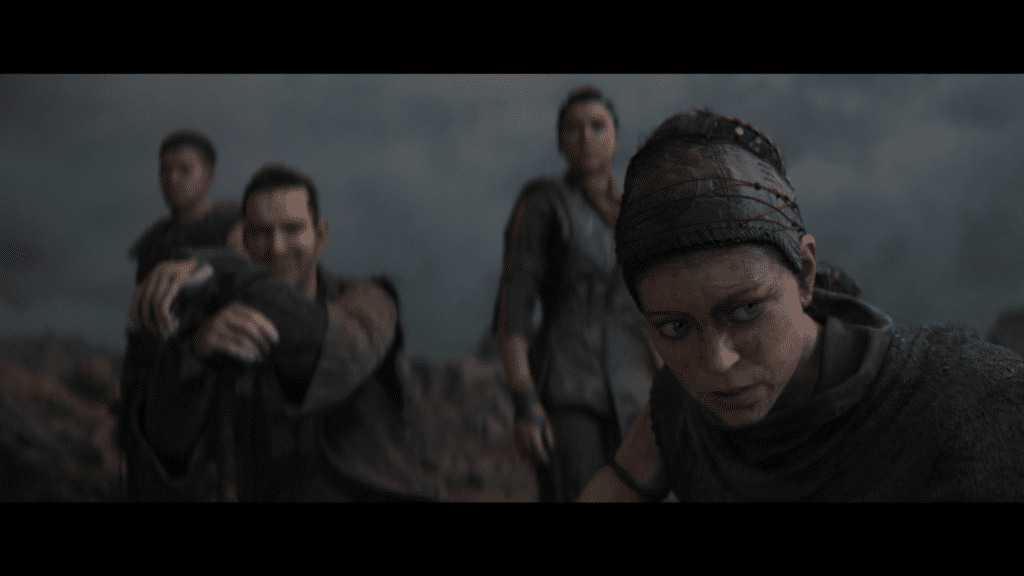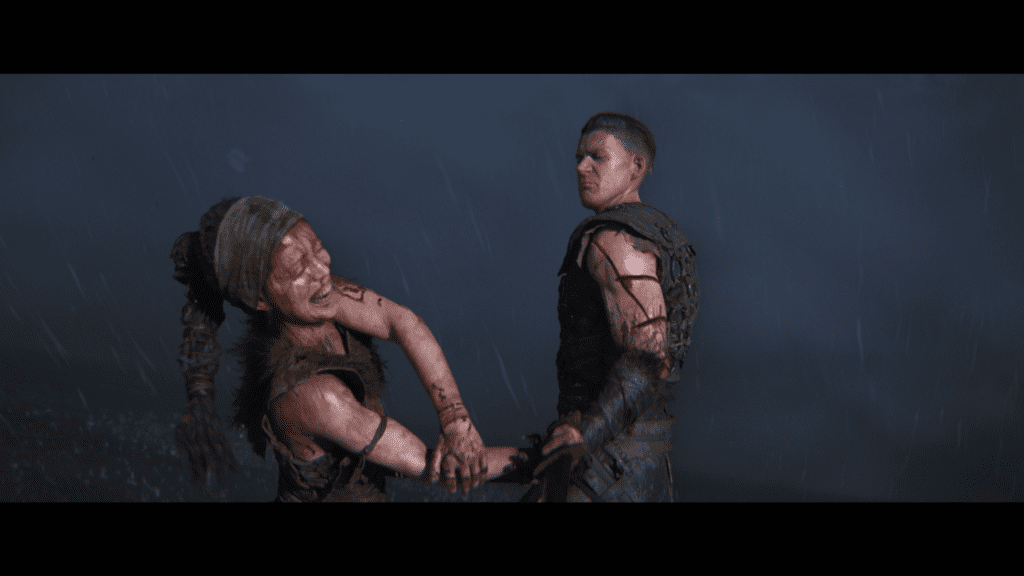
Initial release date: May 21, 2024
Platforms: Xbox Series X and Series S, GeForce Now, Microsoft Windows
Engine: Unreal Engine 5
Developer: Ninja Theory
Genres: Puzzle, Action-adventure game, Fighting game, Adventure
Series: Hellblade
Publisher: Xbox Game Studios
Senua’s journey started for us in 2017, but even before we had the opportunity to meet her, her struggle had been ongoing. We saw how Senua battled for her lover’s soul in Hellblade: Senua’s Sacrifice, who had been brutally killed when raiders raided her community. Because The Darkness was always threatening to swallow her, Senua’s march across Helheim was also a trek through the warped reality of her thoughts. It was a mind-bending, reality-bending journey that showed players what it’s like to live with psychosis and told a powerful message about perseverance and never giving up. I’ve never played a journey like this one before.
Senua’s Saga: Hellblade II introduces us to the next phase of Senua’s life, albeit with a different storyline. Senua has accepted that The Darkness, her insanity, is a part of her but does not define her, even though she is continuously plagued by the ghosts of her past. She has the most extraordinary perspective on the world; she can see and feel things that others cannot, and she is capable of doing things that no one else is.
Senua is on a slaver’s ship sailing toward an unidentified land when the game opens on the wild Atlantic seas, but she isn’t there by mistake. She is there to protect her people by stopping these enslavers. On the other hand, she discovers a horror much greater than anything she could have ever imagined as she comes off this boat excursion. This time, instead of fighting her way through literal hell, she is fighting the worst aspects of humanity, which makes the realities of this land even more twisted and terrible. The actions of Senua, her motivation for coming, and the causes she is fighting for are all rife with symbolism throughout the game.

Senua won’t have to fight this battle alone, which is the main difference this time around. She has friends—and not only the ones in her head—who can lead her, rescue her from the shadows, and prevent her from giving up. Even though they obviously have their own agendas, they nevertheless assist her. Additionally, I detected a shift in Senua’s inner voice’s tone. While they were nearly always urging Senua to give up and that Senua would fail in Senua’s Sacrifice, Senua’s Saga witnesses—or rather hears—those voices attempting to uplift her. Naturally, they continue to voice their doubts, and she is frequently made fun of for their somewhat bipolar behavior as well as for remembering Dillon and her father.
Wearing headphones to enjoy full 3D binaural sound is the ideal approach to fully experience Senua’s adventure. This was also used in the first game to assist the player become thoroughly immersed in Senua’s thoughts and the approaching darkness. Senua’s psychosis is heightened by this, giving you the impression that you are the one experiencing the noises and voices. Ninja Theory persisted in their collaboration with University of Cambridge Professor Paul Fletcher and individuals who have personally experienced psychosis in order to authentically and thoughtfully bring Senua’s worldview to life. I was actually on the verge of collapse, waiting for whatever it was that I sensed was just behind me, so being on the edge of my seat wasn’t simply a metaphor.

Senua’s Saga takes place in a very different place than Helheim. The game is set in the stunning island nation of Iceland, which features breathtaking scenery that has been digitally and photogrammetically recreated. The sun beams brightly across the mountains and meadows, bringing with it an array of colors. Undoubtedly, the utilization of Unreal Engine has significantly contributed to the exquisite physics and fine detail of even the smallest particles and stones. Before being included into the game, the character and prop costumes were also handmade in real life, paying attention to even the slightest details. The characters wearing the costumes are highly reflected in them, with their origins and lifestyles being reflected in them.
Those who have experienced the first game will recognize Senua’s Saga immediately. It’s a classic instance of “if it ain’t broke, don’t fix it.” The game plays almost exactly like the first one, with straightforward combat and interaction mechanisms (if you haven’t played the first one, please do). The primary distinction is the reduced amount of combat compared to the original game. Although there will be a segment in which you must defeat a number of foes, the narrative experience and Senua’s distinct perspective on the universe are given far more attention in this game. There are more hidden mysteries to uncover that offer guidance or narrate tales of Senua’s heritage, and I was thrilled to see the lorestones return and tell more tales of the mythology of the Northmen.
The small group at Ninja Theory takes great pleasure in telling amazing, complex, and engrossing stories. The Hellblade video games are an example of how the studio’s mission statement, which aims to “craft life-changing art with game-changing tech,” has been effectively fulfilled. I experienced a voyage of profound emotions, strength, and revelation with Senua’s Saga that had only been seen in its predecessor.

Once again, I want to thank Xbox and Ninja Theory for giving us the chance to relive Senua’s narrative. This has been something I’ve been waiting for what seems like forever, and I’m delighted it comes up to the first game’s reputation. Even for a completionist, this game can be finished in 8–10 hours. It’s not that long. This game’s lack of a physical release bothers me a little because it follows the increasingly popular trend of video games being sold exclusively digitally. It’s a little difficult for me to argue that the $50 price tag is truly warranted given that the game has a short runtime and was just $30 when it was first launched.
Review Overview
Gameplay – 90%
Story – 95%
Aesthetics – 98%
Content – 88%
Accessibility – 85%
Value – 90%
Overall Rating – 91%
Outstanding
Summary: Senua’s Saga: Hellblade II immerses the player in the head of the game’s titular heroine through breathtaking storytelling. Not to its fault, it is even more narratively driven than the original game, emphasizing Senua’s perception of and interactions with her surroundings. From beginning to end, the entire trip has been incredibly unforgettable.

